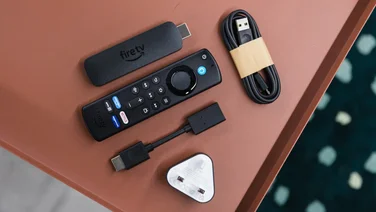To help us provide you with free impartial advice, we may earn a commission if you buy through links on our site. Learn more

Although YouTube is home to some of the world’s biggest child-friendly video makers, you should still supervise your children as they’re browsing YouTube. This is because there are currently no catch-all ways of stopping objectionable content – whatever your view of that might be – from making it on to your kids’ screens. There are a few ways to make things a bit safer, though, which I’ll explain below.
Enable Restricted Mode/Safety Mode:
This is the best method to block most objectionable content is to enable Restricted Mode, sometimes referred to as Safety Mode.
Full details on how to enable Restricted Mode on various devices can be found on YouTube’s help pages (http://tinyurl.com/YTrestrictedmode), but it’s also worth explaining exactly where Restricted Mode does and doesn’t work.

Restricted Mode uses “community flagging, age restrictions and other signals to identify and filter out inappropriate content”. In other words, and unsurprisingly, videos aren’t manually vetted to see if they’re suitable for kids and you’re relying on the YouTube community and Google’s algorithms to block content you don’t want your child seeing. YouTube makes it very clear that it’s not 100% reliable. You have been warned.
It’s easy to flout these restrictions, too. While unsuitable content is unlikely to show up next to their favourite kids’ content, Restricted mode does not disable the search function and it doesn’t block videos that might have bad language or potentially offensive jokes. More easy-to-spot terms are blocked; search for videos of the game Call of Duty, for example, and while you’ll get a full list of search results, the vast majority of the videos will be blocked as the game in question is for mature audiences.

One area where this is very clear is the world of Minecraft videos, which are very popular with children. There are some huge kid-friendly Minecraft YouTube channels, such as Stampy, which are very careful to avoid swearing. Conversely, the Yogscast, which also focuses heavily on Minecraft, does not censor swearing or adult content, but remains mostly unblocked by YouTube Restricted Mode. YouTube continues to show advertising for alcohol products when restricted mode is enabled, too.
Additionally, when you enable restricted mode in your web browser, you should ensure you click ‘Lock restricted mode for this browser’. This means you can log out of your account and still restrict other users of the browser. There is a workaround for this, and if your children are particularly clever, they can open a new Incognito window, which disables restricted mode. In short, Restricted Mode is not a replacement for supervising your children. Until YouTube Kids launches in the UK (see below),
Where to start
Expert Reviews is not a parenting website, but there are plenty of resources that claim to be and keep numerous handy lists of YouTube channels suitable for younger kids. These include Common Sense Media, which has lists of YouTube channels (http://tinyurl.com/YTforkids) with videos suitable for various ages.
They also keep a list of popular Minecraft channels (http://tinyurl.com/YTminecraftkids), with added information about how complex the videos are and whether they’re suitable for very young viewers.
YouTube Kids

To illustrate how big the child market is to YouTube, you only have to look at the numbers. In the September (the most recent viewing figures available at the time of going to press), five of the ten most-viewed YouTube channels were aimed at children, with toys reviews, cartoons, sing-alongs and video blogs dominating the world’s viewing habits (http://tinyurl.com/YTsept15). Four were music channels. One was BuzzFeed.
It comes as no surprise, then, that YouTube is cashing in. In February 2015, it launched YouTube Kids, an app for Android and iOS that curates family-friendly content into an easily digestible and searchable package.
Currently, the app is only available in the US, but its first eight months on the scene have been trying to say the least, with accusations of unlabelled sponsored content chief among the issues that were brought to the US’s Federal Trade Commission. Indeed, channels from the likes of McDonald’s, Fisher Price and Lego all getting a fair amount of promotion, with other companies also receiving product placement spots in video reviews of toys. It’s not exactly new; cartoons with branding messages have been around for decades, but with a more enlightened audience and more suspicious parents, YouTube has a challenge on its hands.
The app does actually have some useful features for parents, including time limits to stop long binges, a volume limiter and the ability to disable the search function and only allow them to watch content promoted in the app.





